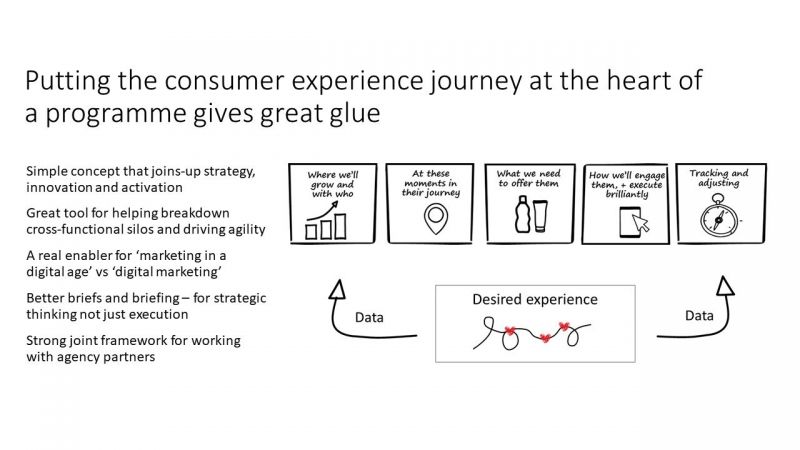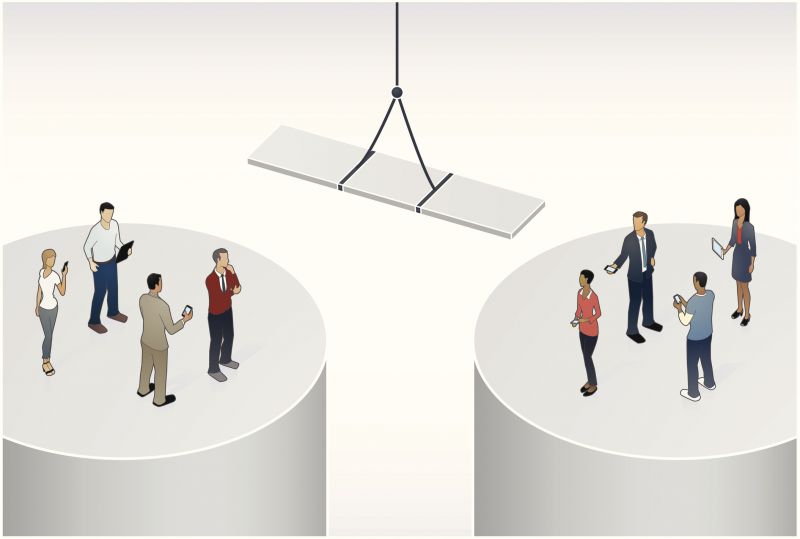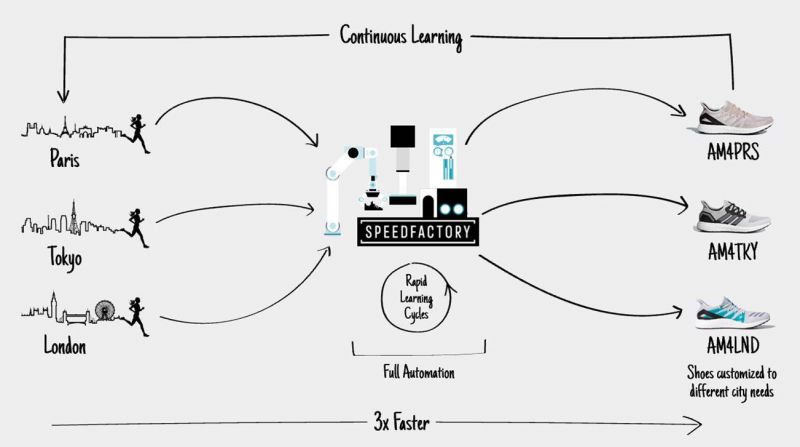A simple recipe to evolve your organisation for growth
I grew up on a small and remote hill farm; our heating was from a single coal-fired stove, our water from a shallow well. Everything was the product of hard work. But it was, in many ways, simple.
These days, life is so much less laborious; conveniences and connected tech easing the daily chores. But, the cost is that life is much less simple. The credit and blame for much of this lies at the doors of the world’s biggest companies. So far, there is cost-benefit balance, more or less, and it’s been an exciting period of growth. However, as benefits become harder to distinguish, and the complexity and confusion increases for consumers, growth may get harder to find.
To keep growing, these organisations need to refocus on how to really make life better for people, whilst avoiding creating more complexity or unsustainable impact. In short, we need to go back to putting the people we serve at the heart of all our thinking, and relentlessly removing the barriers to that within these organisations.
For those that can do this quickly and well, the benefits will be huge. We’ve seen companies like Warby Parker, Method, Lululemon Athletica, Netflix, Zipcar reinvent categories and take the lead by doing exactly this.
Adapting to the environment is something that we knew a lot about on the farm – it’s amazing seeing how a crop responds to the situation – for example drought - and varies enormously one year to the next. Plants are the ultimate in adaptation. If a simple seed can do this, then so can we!
However, the reality is that many organisations have NOT kept pace as new behaviours have emerged.
I’ve been asked the question “What does the marketing organisation of tomorrow look like?” by a few clients recently, who are wrestling with these challenges. Great organisations have always focused the right people, behaviours, processes and tools in the right way to deliver the organisational vision – i.e. the future the organisation is trying to create for its customers/consumers & itself.
This hasn’t changed, but the advent of ‘digital’ has both impacted people’s behaviour (inside and outside the organisation) and an organisation’s ability to meet people’s needs. Future proofed organisations still need to be set up behind a growth vision, but in the context of the new behaviours & new ability to meet their customers’ needs.
So, what changes do you need to make?
I believe there are three critical changes that are at the heart of this challenge:
1. Use the customer experience journey to re-focus what everyone does
At Oxford we’ve done this for a few clients – and it's really powerful.
The simple goal of this is to understand how consumers or customers become aware of brands or services, consider them, shop for them, purchase and, hopefully, buy again. And, equally, if they don’t come back, why they didn’t. We need to provide the people that use our product and services with simpler, better, more joined-up experiences. By organising our teams around these joined-up experiences, we can build more motivating and complete experiences!
Start-ups do this naturally – typically they have a clear purpose and aim to make things different and better for the people they serve. Being smaller, and often fundamentally invested in the needs they meet, they create solutions and experiences that feel more natural and human! The provision of an amazing overall product or service experience is an almost natural consequence of that. As organisations grow, and structures, roles and accountabilities become more complex, some of this essence is lost. The experience journey provides a simple way to refocus and stay connected.

2. Rethink how people work together internally
I passionately believe in breaking down the old silos and freeing up teams to do this.
Critical to growth is creating teams that are motivated to work together, and rewarded for the outcomes, both for new brands or services and for established businesses. The concept of a ‘Chief Growth Officer’ is not new, but we are seeing a continued interest in this idea in our clients and beyond. Bringing in a CGO in place of a CMO can be a sign that marketing has lost its way – it has become unaccountable or is lacking the skills in leadership it needs to drive growth. Either way, it is essential that marketing is more commercial and more accountable right through the organisation. This ensures that execution and P&L accountability are not separated.
Uniting the functions behind one goal, and then pulling the right levers to achieve this, without the restriction of functional silos and targets has got to be a good thing, right? This structure also recognises the fact that EVERYONE, not just the marketing team, contributes to creating the ideal customer experience that leads to growth. So, leave the old structures and mindsets like “my budget” or “my customer” at the door. Brands and organisations with clear purpose and values enable teams to work together more collaboratively to delivering growth enabling customer experiences.

3. Be willing and able to work and innovate at pace
As a consulting team, we believe that being flexible and adapting fast is critical for growth and survival. It’s how our organisation was set up and still works, based on agile teams made up of the right skills, that flex to client needs and demand. We’ll share more about how this works in another article.
Agility or being flexible has two aspects – one has to do with the right structure and the second has to do with the right mindset.
Much has been written about ‘agility' and the Agile approach is becoming well known. Originally created in the tech companies, to get coders to see beyond the technical possibilities and think about what the customers actually needed - this approach has now been widely used (with customisation) in many commercial organisations. Agility or being flexible has two aspects – one has to do with the right structure and the second has to do with the right mindset.
For many, the organisation structure is becoming more fluid. Consider the number of partners that your organisation now works with. Typically, this number is growing with the search for greater specialism and expertise. For example, the pre-eminence of creative and media agencies is being reduced – both as other specialist agencies/partners become part of the ecosystem and as internal teams make more decisions, for example, on digital media buying.
What is equally, if not more important, than the organisational structure, is an entrepreneurial mindset
So, the ability to work with different external teams at different times, whilst keeping it all ‘connected’ will be essential. For example, NYX, a cosmetic brand, uses its consumer panel and make-up ambassadors to create, launch and generate 'word of mouth' for all its products. Manufacturing, back office and distribution is often outsourced or achieved through partnership.
However, what is equally, if not more important, than the organisational structure, is an entrepreneurial mindset. This will take considerable cultural change for many organisations – but is critical to future growth. It will require teams to believe it is okay to experiment, fail and learn. Many traditional companies are trying to instil the mindset of ‘60% right, launch and learn’ approach. This mindset can drive true competitive advantage.
For example, Adidas is making strides in footwear innovation with Adidas Speedfactory. The brand puts focus on research and advanced manufacturing process to improve performance and deliver a collection of running sneakers for big cities around the world. Speedfactory is all about speed and customisation – by studying real sports science data from athletes from each city – Adidas created shoes for New York, London and LA athletes. The shoe also has a NFC (near field communication) chip in the tongue which enables the user to access content via their phone. This model lets them experiment and is developed much faster than with traditional manufacturing methods.

In my experience, these are the three areas which can have the biggest impact.
Maybe it’s my farming origins, but this feels natural to me – really understanding the environment and being ready to respond with the right change.
What do you think? I’d love to hear from you about the power of customer experiences and agile ways of working to help organisations and brands grow.
Please feel free get in touch with me at adam.price@oxfordsm.com.
#BNAU2018
Share this
You May Also Like
These Related Stories

Pharma Leaders: best practice Launch Deployment

Why ‘S’RM…Strategic Revenue Management is the new NRM

.png?width=657&height=57&name=OXFORD%20LOGO%20(1).png)
No Comments Yet
Let us know what you think